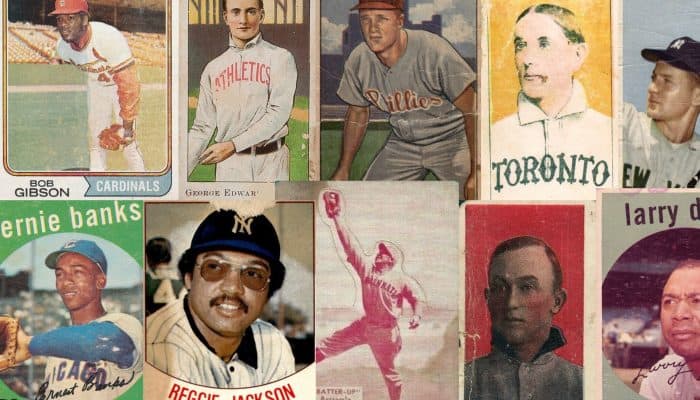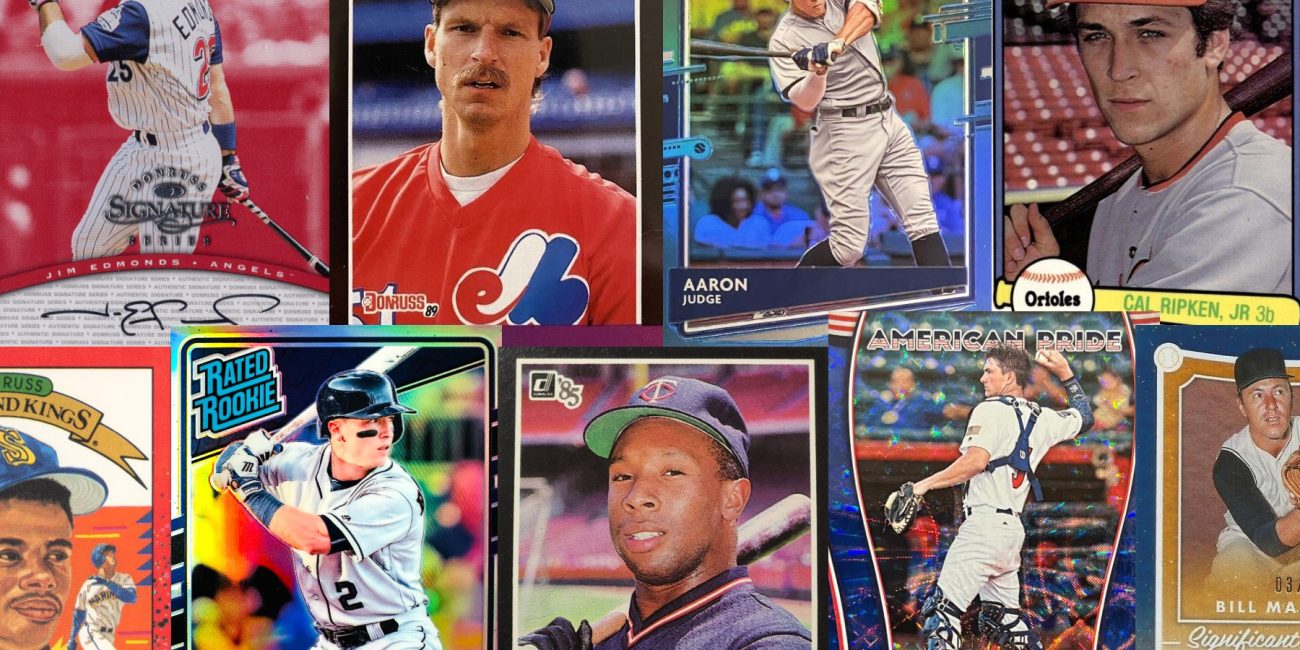
For baseball card collectors, the sight of Donruss baseball cards evokes a sense of nostalgia and memories of innovation. From their humble beginnings in the candy industry to operating under the Panini umbrella, Donruss has come far. Collectors seek them out for a hint of nostalgia, or for an alternative to traditional card designs.
This article dives into the rich history of Donruss baseball cards, the company’s impact on the trading card landscape, and its current offerings for collectors of all ages.
Early Days of Donruss Baseball Cards
The story of Donruss starts in 1934 with the Wiener brothers, Donald and Russell. They ran a candy company in Memphis, Tennessee and their flagship product, “Super Bubble” gum, was a success. In 1954, the company officially became known as Donruss, a portmanteau of their names.
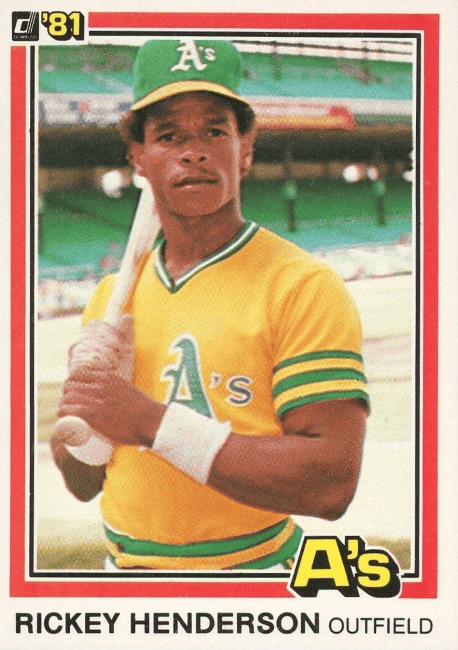
Their foray into trading cards began in 1981 with their first set of baseball cards. This marked the beginning of a fierce competition with established giants like Topps and Fleer. Donruss quickly carved a niche with its bold designs, player action shots, and focus on up-and-coming rookies. This earned them the nickname “The Rookies’ Choice.”
The iconic “Rated Rookie” insert series, introduced in 1984, became a cornerstone of Donruss’ identity. These cards featured promising young players with their “rookie rating,” adding an element of speculation and excitement for collectors.
Donruss vs. The Competition
The 1980s and 1990s were a golden age for baseball cards (often called the “junk wax era”), and Donruss was at the forefront of the battle for collector attention. They challenged Topps’ dominance with innovative designs, like the “Diamond Kings” series featuring futuristic player illustrations.
However, financial struggles plagued Donruss throughout its independent existence. In 1998, Pinnacle Brands, the company’s parent, filed for bankruptcy, leading to the end of Donruss’ original run. Playoff Inc. acquired the brand and produced baseball cards from 2001 to 2005 before losing their license.
Panini & Donruss Baseball Cards
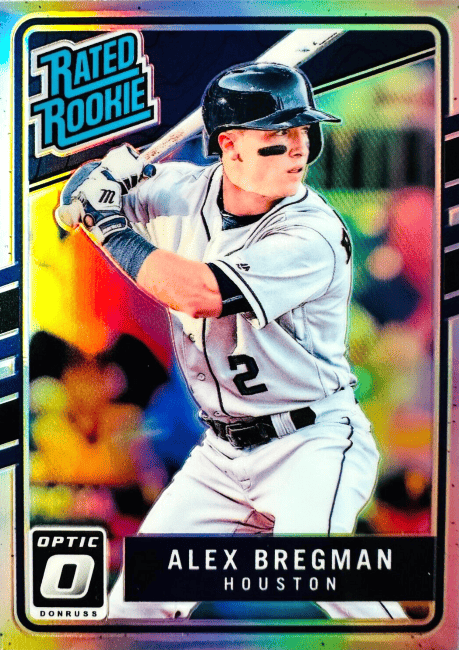
In 2009, the Italian trading card giant Panini acquired Donruss, marking a new chapter for the brand. Panini revitalized Donruss, leveraging its rich history and iconic designs while integrating it into their expansive product portfolio.
Today, Donruss offers a diverse range of baseball card products, catering to collectors of all budgets and preferences. Their flagship product, “Donruss Optic,” carries on the tradition of innovative design and exciting inserts with a higher-end target audience. The base Donruss sets offer affordable options for casual collectors and newcomers. Those sets also include inserts, like the Signature Series, refractors and Retro Materials.
Donruss & MLB Licenses
You’ll notice that modern Donruss baseball cards lack the familiar logos and names of Major League Baseball teams. This is because they don’t possess the licensing rights to use that intellectual property. While the Major League Baseball Players Association (MLBPA) grants licenses for players’ names and likenesses, these rights don’t include team branding. Team branding comprises logos, names, and even uniform designs. This is why Donruss cards often showcase airbrushed images of players, where the team’s logos have been removed. So, while you can still enjoy seeing your favorite athletes on these cards, the distinct team identity will be absent.
Five Iconic Donruss Cards to Collect
Most of the sought-after Donruss cards are from the company’s heyday in the 80s and 90s. This was a time when all of the leading rookies had a card in Donruss’ sets. But rookies aren’t all that Donruss is famous for.
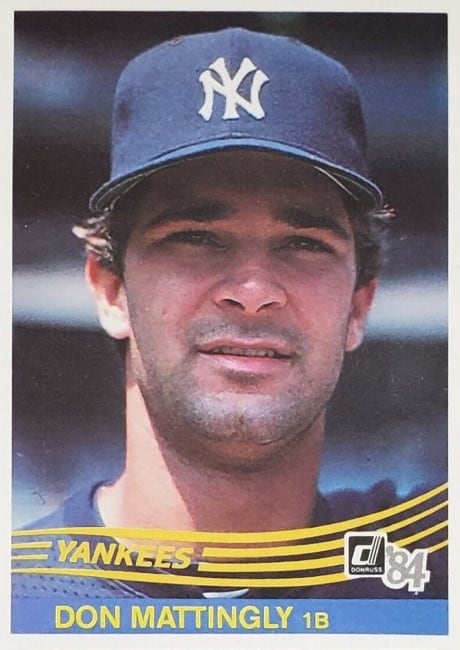
Here are five cards, spanning three decades, that highlight a variety of Donruss cards.
- 1984 Donruss Don Mattingly #248 (RC): Mattingly was the headlining rookie in 1984 as he embarked on the first year of his Yankees career.
- 1987 Donruss Barry Bonds #361 (RC): Baseball’s homerun leader had some underwhelming rookie cards in 1987, but this one is quality, with the design of the card perfectly accentuating the Pirates’ player.
- 1990 Donruss Ken Griffey, Jr. #365: Although this isn’t his rookie card, Griffey is still the headliner for the coveted 1990 Donruss set, known for its radical, 90s-style design.
- 1994 Donruss “Rated Rookie” Alex Rodriguez #114 (RC): Rodriguez began his career in a Mariners uniform as a Rated Rookie at shortstop.
- 2001 Donruss “The Rookies” Albert Pujols #R97 (RC): This insert card goes alongside Pujols’ Donruss base card, which has a similar design. Both are desirable and worth collecting.
For those who are looking for something else to collect, consider starting with Donruss’ early sets. You could even bust open some wax packs yourself and start to build a set. It’s a great way to get to know the players of those eras.
Conclusion
Donruss’ journey through the baseball card landscape is a story of innovation, competition, and adaptation. Today, collectors continue to seek vintage Donruss cards, cherishing their connection to the brand’s rich history and vibrant community.
Whether flipping through packs or admiring prized rookie cards, Donruss’ legacy remains part of collectors’ DNA. As the hobby continues to evolve, Donruss is poised to remain a key player in the hobby.



